Black Prince 블랙 프린스 (engl./ fr.)
Parentage : Echeveria shaviana x E. affinis.
Created by Frank Reinelt, Capitola, California
Description by Abbey Garden (in "Abbey Garden Plant Distribution List") :
"Echeveria 'Black Prince: this is the first offering of this appealing new cultivar developed by Frank Reinelt of Capitola, California. the seed parent is Echeveria shaviana and the pollen parent is E. affinis. E. affinis, the "black" Echeveria, gives the new plant its color, and E. shaviana gives the plant its delicacy. Rather than black, the 'Black Prince' is actually more of a dark lavender brown. The rosettes are up to 3 inches in diameter; the leaves are quite thin and at first triangular, becoming rather spatulate, to 23 mm wide, tip acuminate, the very point is hyaline yellow."
Note :
Obviously, the plants we have with the name 'Black Prince' do not well match the above description, they are not "dark lavender brown", the leaves are neither thin nor spatulate and the very point is not hyaline yellow.
Conclusion : The parentage E. shaviana x E. affinis is not correct for the plant today called E. 'Black Prince'.
As E. affinis is only "slowly proliferous" and E. shaviana is also only "sparsely branching" it may well be possible that this hybrid has got lost to cultivation and the name been attached to other "black" echeverias - what would explain why E. 'Black Prince' is a very variable hybrid.
Very often it is confused with E. affinis but it is easy to distinguish it from this species because of the numerous big bracts.
----------------------------------------------------------------------------------------------------------------------------------------
Parenté : Echeveria shaviana x E. affinis.
Créé par Frank Reinelt, Capitola, Californie.
Description due à Abbey Garden (dans "Abbey Garden Plant Distribution List") :
"Echeveria 'Black Prince : Nous proposons, pour la première fois, ce nouveau cultivar attrayant réalisé par Frank Reinelt, de Capitola, en Californie. Le parent femelle est Echeveria shaviana, et le parent pollinisateur est E. affinis. E. affinis, l'Echeveria noire, donne sa couleur à cette nouvelle plante ; E. shaviana lui conférant sa délicatesse. Au lieu d'être noir, le 'Black Prince' est plutôt d'un marron violacé. Les rosettes mesurent jusqu'à 8 cm de diamètre ; les feuilles bien fines sont d'abord triangulaires, devenant ensuite spatulées, de 23 mm de largeur, et au bout pointu ; l'extrême pointe étant d'un jaune transparent."
Note :
Evidemment, les plantes que nous avons sous ce nom de 'Black Prince' ne reflètent pas vraiment la description ci-dessus ; elles ne sont pas " marron violacé ", les feuilles ne sont ni fines, ni spatulées, et l'extrême pointe n'est pas d'un jaune transparent.
Conclusion : La parenté E. shaviana x E. affinis incorrecte pour la plante aujourd'hui nommée E. 'Black Prince'.
Etant donné qu'E. affinis n'est que lentement prolifique et qu'E. shaviana ramifie peu, il se pourrait bien que cet hybride eût disparu en culture, et que le nom se fût reporté sur d'autres Echeveria noires - ceci expliquant pourquoi E. 'Black Prince' est un hybride très variable.
Il est très souvent confondu avec E. affinis, mais il peut être facilement distingué de cette espèce par ses nombreuses grosses bractées.
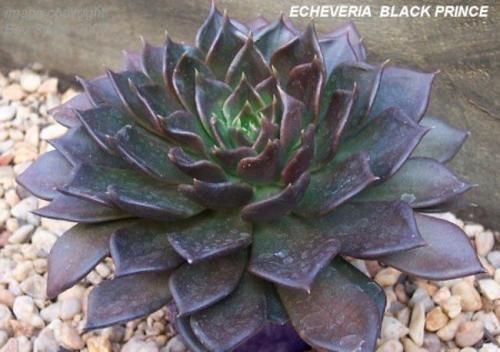
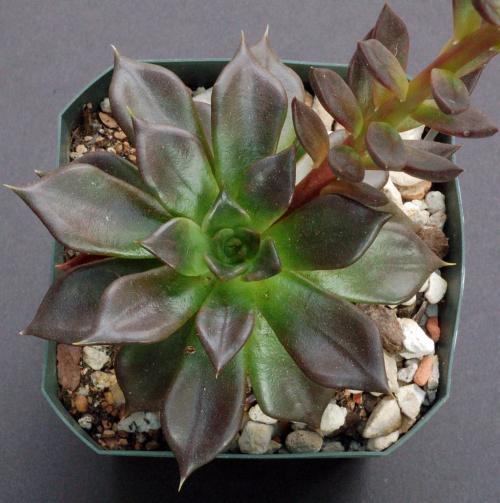
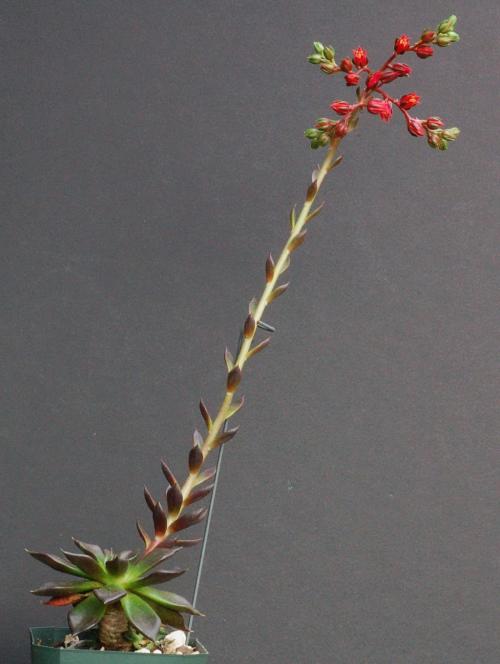
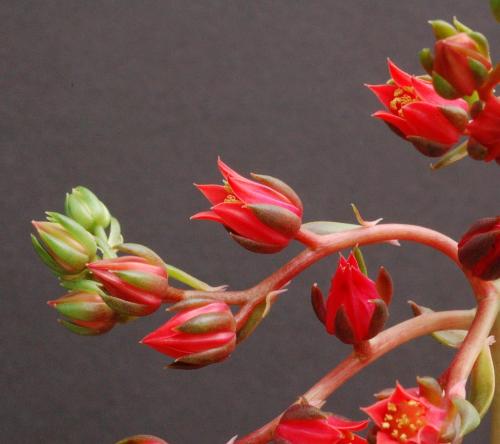
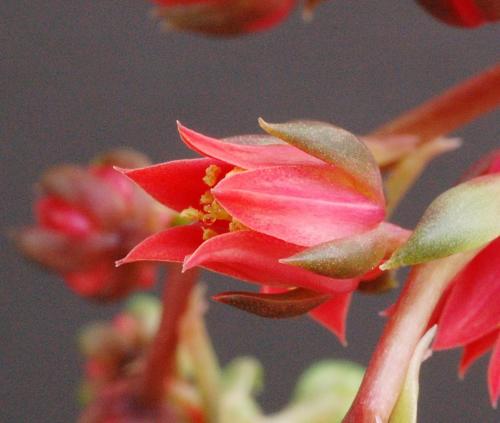
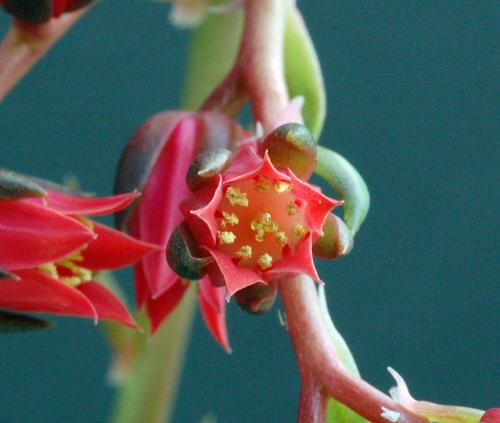
Echeveria affinis at left, E. 'Black Prince' at right.
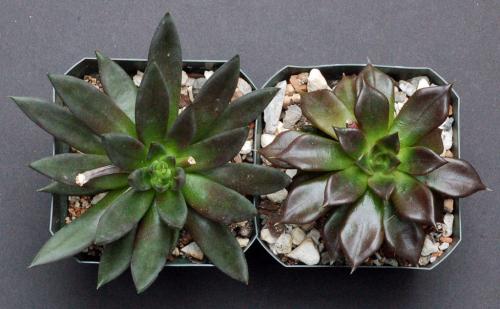
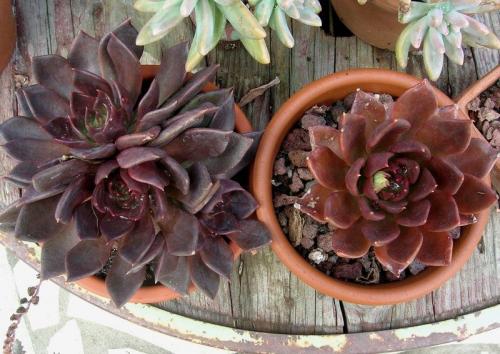
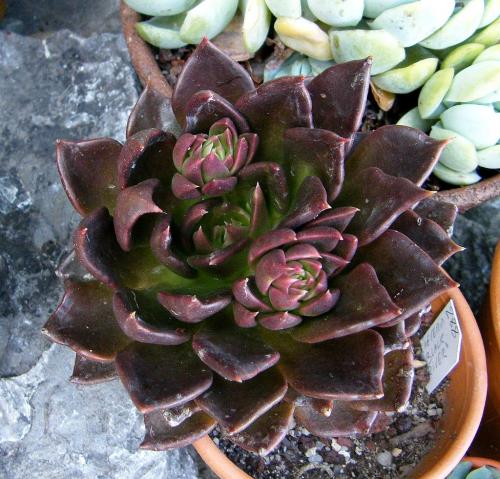
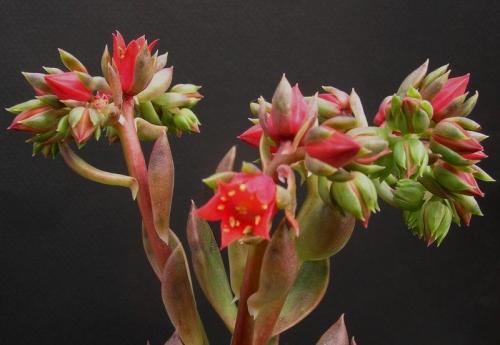
New rosettes forming on the spent inflorescence :
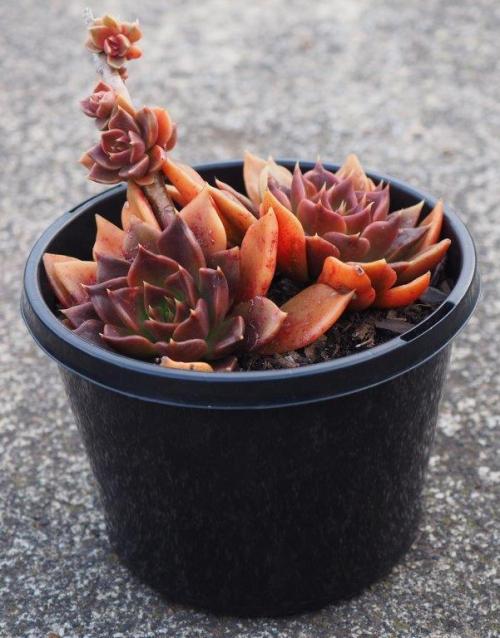
Photo Santino Rischitelli